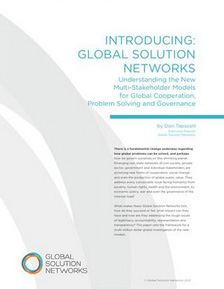“Lack of engagement is one of the biggest problems we have today in getting more students through the college and university system,” says Vineet Madan, vice president of strategy and business development for McGraw-Hill. “If we don’t tackle the engagement problem collectively, we’re not going to get more people through the system. … And one of the great promises of social media in higher education … is about promoting engagement.”
So true. As reported in the online publication eCampus News, Madan was part of a panel discussion at Social Media Week in New York. Education technology experts on the panel said keeping college students and their professors connected through social media outlets could be key in boosting graduation rates. The future of campus technology, Madan said, “is not going to be sitting there and watching a webcast of a professor lecturing on a screen—that’s not engaging.”
Social Media Week ran through the first week of February in six cities worldwide—New York City, San Francisco, London, Berlin, Sao Paulo, and Toronto—and authorities from the business world, academia, and other fields discussed how social media sites like Twitter and Facebook are shaping global culture.
Kathleen King is a professor of adult education at Fordham University. She said that professors are unlikely to accept and use social media tools in their courses widely until faculty members are rewarded for innovative accomplishments—and not just traditional research and pursuing tenure.
“There is no incentive in most universities for engaging with social media or even for faculty to engage their students,” said King, president of Transformation Education LLC, a group of educational advisors based in New Jersey. “We have to start with the professor first, and we have to look to the institution.”
The tools are there. There are many Facebook applications that can help faculty engage with students, and faculty engage with one another.
And the need is there. Universities are facing a high dropout rate. A dismal 58 percent of entering freshmen in the U.S. actually graduate from the same college within six years. More and more students are questioning the “bang for the buck” as college tuition has risen in cost more than any other good or service since 1990, leaving students with $714 billion in outstanding student-loan debt.
At its top levels, the American universities are among the best in the world. Yet in terms of its core mission —producing educated college graduates — much of the system is simply failing.
According the New York Times, only 33 percent of the freshmen who enter the University of Massachusetts, Boston, graduate within six years. Less than 41 percent graduate from the University of Montana, and 44 percent from the University of New Mexico. The economist Mark Schneider refers to colleges with such dropout rates as “failure factories,” and they are the norm.
We need to do much better. Half a billion people now participate in social media sites, reflecting the remarkably compelling nature of online relationships. Their use in making higher education more engaging is urgent and obvious.






Hi Don,
I go into the schools from time to time to get an idea of the pulse of our future and I tell you some of these teachers need to be sent back to school to remember how boring school can be. They could increase their classroom budgets by eliminating the daily worksheets they handout to students and spend more time talking to the students instead of burying them in busy work.
High school is my favorite they have great ideas but rarely are allowed to express their creative genius. The progressive teachers who try to implement digital engagement strategies in the classroom are penalized for stepping out of the box. Thank goodness for the magnet trade schools that are preparing students for the real world.
Good to chat with you. Looking forward to having you as a guest on the show soon.
Don,
I prepared an overview of my experiences designing and teaching the post grad level course in social media for Humber's PR program for Social Media Week Toronto, but was flat on my back with flu and had to cancel.
I will do a make up presentation at a forth coming Wiki Tuesday. I will let you know the date. You or some in your tribe may be interested.
I launched a network on Ning to support the course and we have over 90 mentors from all over the world (Singapore, Australia, LA to NYC as well as great Canadians) engaged for about 240 students. It would be great to have you join at http://www.humberpr.ning.com. The course is almost paperless.
Mentors are involved in coaching students about their online identities and evaluations that are performed entirely online. By now the course outline is probably the most vetted in college history. We would value your comments here: http://humberpr.ning.com/forum/topics/social-me…. I asked Howard Rheingold, who designs and teaches in this area at Stanford & Berkeley, to review and he offered, “Your syllabus looks rich and comprehensive.”.
I completely agree with your points re: incentives above. I need to move onto other things now that the wrinkles are ironed out for a variety of reasons, but relationships not financial incentives were key to this “start up”.
Hey Don,
I am writing an ebook to help fearful teachers join the rest of us on the Internet and build their own websites. I am going to post it soon on my website: http://www.newteacherhelp.com
Teachers could do so much to engage students by building and updating their websites with educational video clips (from YouTube and TeacherTube), and podcasts available from no less that 20 free sites. It's a shame that all of this stuff is available to educators for free, and they instead focus on “what's bad” about the kids using technology.
Until teachers become engrossed in social media as collaborators, I don't think they will value all it has to offer the learner.
@ the comments, I agree. But I feel the true leadership intiatives are promoting teachers to experiment and encouraging school districts to remove restrictions on cell phones and websites. Encourage teachers to text assignments, have schools set up facebook accounts… promoting what an individual teacher is doing is fine, but doesn't solve the problem.
Hi Don,
I read your article and I can't but agree that we must tackle the engagement problem collectively. A lot of people take a part in social media websites.As for me I want students to learn how to present themselves online in a global context.
Doing this gives students a chance to collaborate with each other, maintaining their own network and extending it around many countries.
After reading the review found at http://www.pdfok.com I learned that Europeans use social media in different ways. The UK and Russia are the most active European countries when it comes to social media use. In these countries almost half of the internet population manages a social network profile, which is about ten percent more than users in countries like the Netherlands, Spain, Italy and Germany.Germany and France are amongst the least active countries. Like in the US most social network profiles are managed by the younger generations. The older Europeans get, the less likely they are to be on social media.